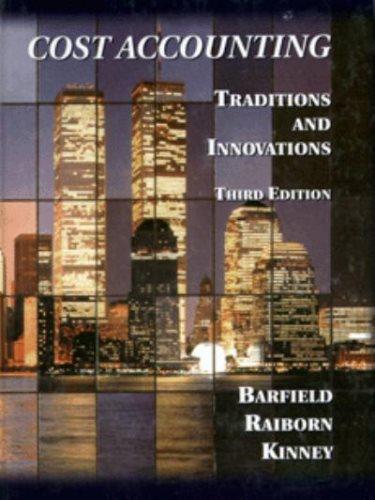In the late 1980s two unlikely organizations, the Environmental Protection Agency and Amoco, agreed to form a
Question:
In the late 1980’s two unlikely organizations, the Environmental Protection Agency and Amoco, agreed to form a joint venture to produce two unlikely joint products, regulation and cost savings. The substance of the joint venture was a study ofpollution at the Yorktown, Virginia, oil refinery of Amoco. Initially, communication between employees of the two groups was stiff and cautious, and miscommunication frequently resultedfrom differing definitions ofwords such as “risk.” After a time, the two groups learned to work together and (perhaps) grudgingly became more appre¬ ciative of the other's problems and concerns.
Ultimately, it appears the project will be very fruitful for both parties. The EPA has learned that many of the requirements it has placed on oil refineries do little to protect the environment and much to increase the costs of operating the refinery. For example, it had required Amoco to build a $41 million enclosed canal to control benzene vapors. In the testing that was conducted in the joint project, it was discovered that the benzene vapors in this part of the operation were 20 times smaller than expected. Also, the EPA has identified areas of the oil refinery operation that produce substantial amounts of pollution that the EPA has historically ignored. For example, at the loading docks in Yorktown, the team estimated that 1.6 million pounds of pollutants are pumped into the atmosphere annually. No EPA rules address this area of the operation. Perhaps the greatest lesson learned by the EPA is that it should refocus its efforts on identifying and controlling pollution rather than mandating the type and extent of equipment that must be used by industry.
[SOURCE: Caleb Solomon, “What Really Pollutes? Study of a Refinery Proves an Eye-Opener,” Wall Street Journal (March 29, 1993), pp. Al, A6. Reprinted by permission of the The Wall Street Journal, © 1993 Dow Jones & Company, Inc. All Rights Reserved Worldwide.]
a. Potentially, how will the quality of Amoco’s operations be affected by the joint venture?
b. Potentially, how will the quality of the EPA’s operations be affected by the joint venture?
c. Why would the EPA have been reluctant to participate in the joint venture?
d. Comment on the ethical considerations in a joint venture that involves a regulator and one of its regulated groups.
LO1
Step by Step Answer:

Cost Accounting Traditions And Innovations
ISBN: 9780538880473
3rd Edition
Authors: Jesse T. Barfield, Cecily A. Raiborn, Michael R. Kinney





